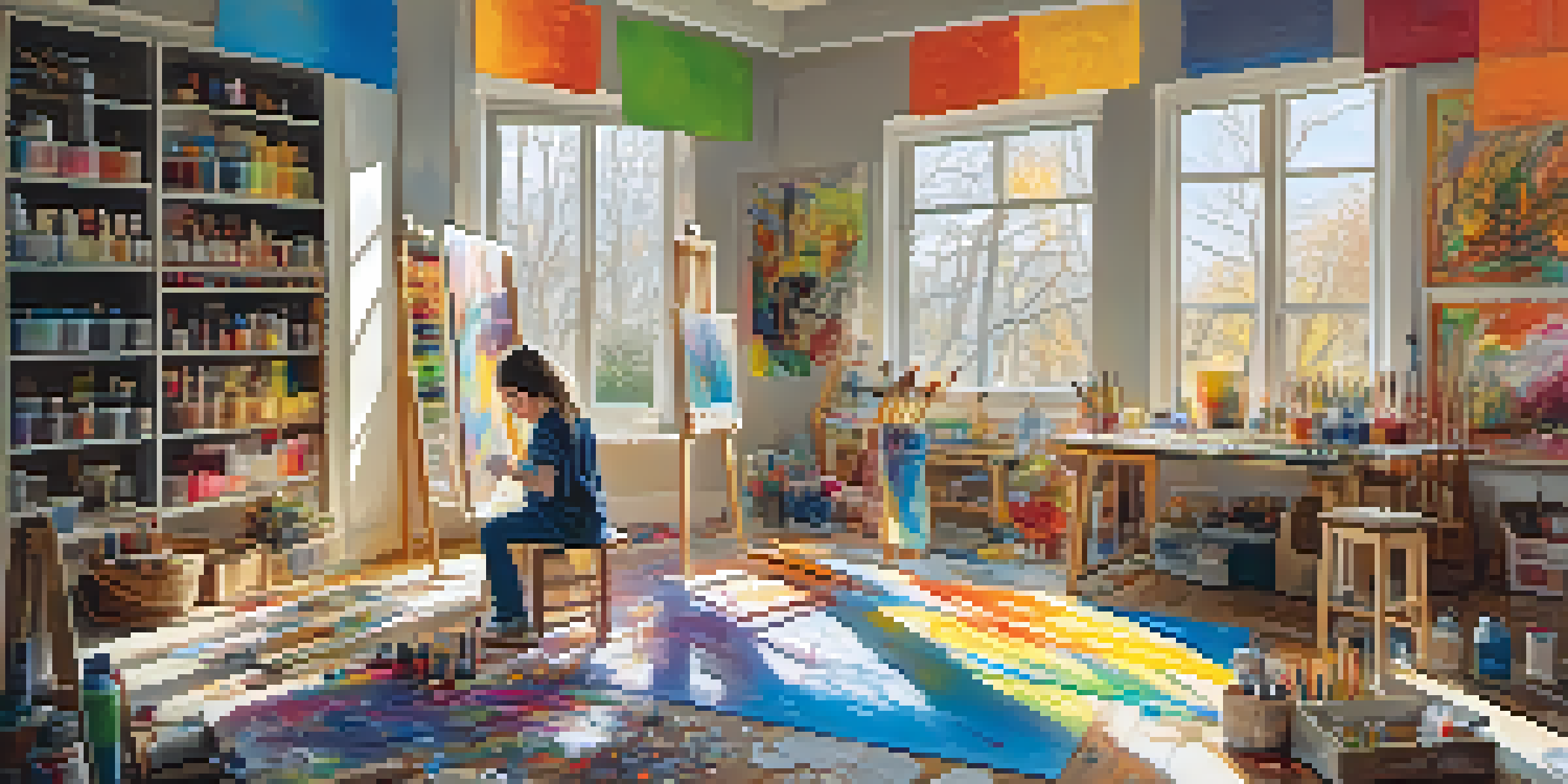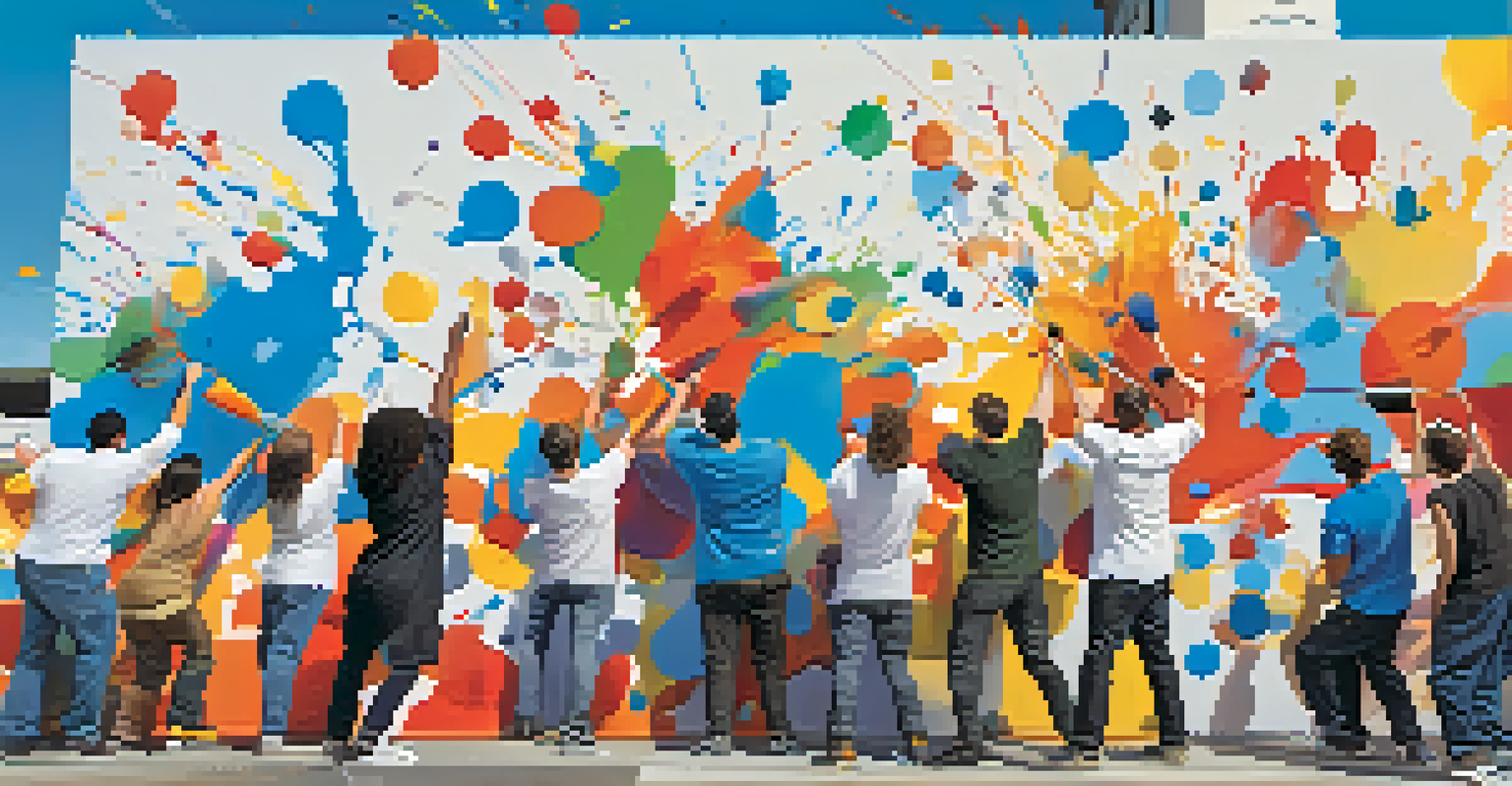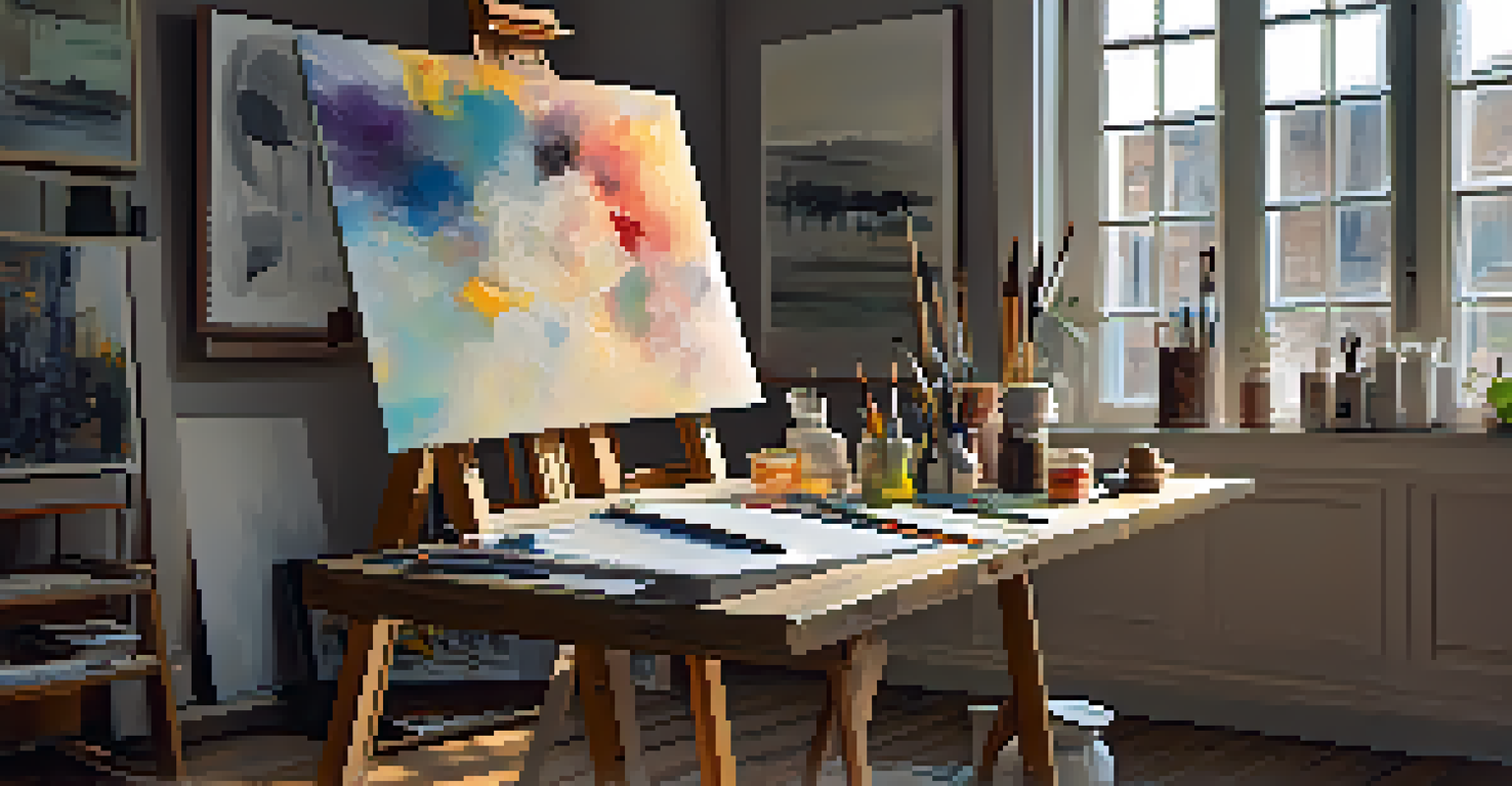Art as Play: Transforming Creativity Through Fun and Games

Understanding the Connection Between Art and Play
Art and play share a deep-rooted connection that goes beyond mere enjoyment. Both activities allow individuals to express themselves freely and explore their imaginations without fear of judgment. When we engage in play, we often stumble upon creative ideas that might not surface in a more structured environment.
Every artist was first an amateur.
Think of a child finger painting for the first time. The joy in that experience is not just about creating a masterpiece; it’s about the act of creation itself. This playful mindset enables both children and adults to break away from conventional thinking and tap into their inner creativity.
By understanding this connection, we can harness the power of play in our artistic endeavors, allowing us to explore new techniques or mediums in a relaxed and enjoyable way.
The Role of Play in the Artistic Process
Incorporating play into the artistic process can lead to unexpected and delightful results. When artists allow themselves to experiment without rigid expectations, they often discover new styles or concepts that resonate deeply with their audience. This playful experimentation can become a source of inspiration and innovation.

For instance, consider an artist who decides to mix paint with unconventional materials like sand or fabric. The resulting textures and colors can ignite fresh ideas and encourage further exploration. This approach not only enhances the artwork but also makes the creative process more enjoyable.
Art and Play Foster Creativity
Engaging in playful activities allows individuals to express themselves and explore their imaginations freely.
Ultimately, play fosters a sense of curiosity that can transform the artistic journey into an adventure filled with surprises.
Games as a Medium for Artistic Expression
Games, whether digital or physical, can serve as powerful mediums for artistic expression. They often combine storytelling, visuals, and interactive elements that engage participants in unique ways. When artists embrace games, they open up new avenues for creativity that blend art and play seamlessly.
The creative adult is the child who survived.
Take the example of video games that feature stunning artwork and richly developed worlds. These games not only captivate players but also showcase the skills of artists and designers who create immersive experiences. Such projects highlight how games can be a legitimate form of artistic expression.
By viewing games as a canvas, artists can challenge traditional boundaries and explore innovative forms of storytelling and visual representation.
Benefits of Playful Creativity in Daily Life
Incorporating playful creativity into our daily lives can have profound benefits. Engaging in fun artistic activities not only nurtures our imagination but also reduces stress and fosters a positive mindset. When we take the time to play, we often experience a renewed sense of joy and vitality.
Consider the simple act of doodling while on a conference call. This playful distraction can actually enhance focus and creativity, allowing ideas to flow more freely. It’s a reminder that we don’t always need a structured environment to be productive; a little play can lead to great breakthroughs.
Play Enhances Artistic Collaboration
Collaborative art projects elevate creativity by combining diverse perspectives and fostering community.
By integrating playful moments into our routines, we create a more balanced and fulfilling experience, sparking joy in even the most mundane tasks.
Playful Techniques to Boost Artistic Creativity
There are various playful techniques that artists can adopt to boost their creativity. One popular method is the use of prompts, which encourage spontaneous creation without overthinking. These prompts can range from simple themes to specific materials, inviting artists to dive into the unknown.
Another technique is to set aside time for free drawing or painting without any predetermined outcome. This practice helps to break down creative blocks and allows for genuine exploration. Think of it as a dance with your medium, where the focus is on movement rather than the final product.
Embracing these playful techniques can lead to a more organic and fulfilling creative process, where the act of creating becomes as enjoyable as the end result.
Collaborative Play: Creating Together Through Art
Collaborative play in art can elevate the creative experience, bringing diverse perspectives and ideas together. When artists collaborate, they can build off each other’s strengths and create something truly unique. This shared experience not only enhances creativity but also fosters a sense of community and connection.
Consider a group of artists coming together to create a mural. Each artist brings their own style and vision, resulting in a vibrant piece that reflects their collective creativity. This collaboration highlights how play can break down barriers and encourage a free exchange of ideas.
Embrace Play for Artistic Growth
Adopting a playful attitude in art encourages experimentation and leads to innovative ideas and personal growth.
By embracing collaborative play, artists can inspire one another and infuse their work with fresh energy and perspectives.
Embracing the Spirit of Play in Artistic Pursuits
To truly transform creativity through art, it’s essential to embrace the spirit of play. This means allowing yourself the freedom to experiment, fail, and explore without constraints. When artists approach their work with a playful attitude, they often find joy in the process, regardless of the outcome.
Think of famous artists like Picasso, who often played with forms and colors to create groundbreaking pieces. His willingness to explore and redefine art was rooted in a playful curiosity that pushed the boundaries of creativity.

Ultimately, embracing play in artistic pursuits can lead to personal growth, innovative ideas, and a deeper appreciation for the art-making journey.